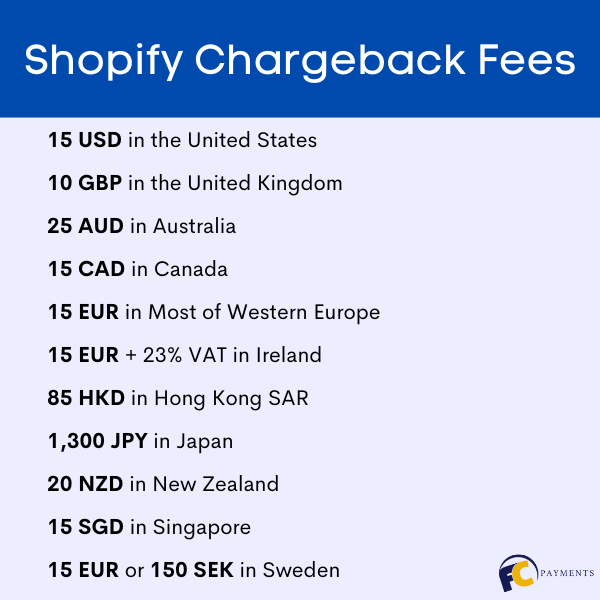
How to Avoid Chargebacks on Shopify (& How to Handle Them)
This article was first published in February 2020, and updated in February 2023.
This is our guide to chargebacks on Shopify including education about what chargebacks are, why they happen, and ultimately, how to avoid them if possible.


But the benefits of doing business on Shopify comes with a downside. The risks for higher chargeback rates is always there, and Shopigy does not have a lot of tolerance for chargebacks. Chargebacks are an issue that’s been haunting a lot of e-commerce businesses for many years now.
In fact, e-commerce companies lost at least $6.7 billion in revenue due to chargebacks in 2016 alone. So if you’re one of the millions of businesses trading on Shopify, you have to understand what chargebacks are.
What is a Shopify Chargeback?
We’ll start with the nitty gritty, what exactly is a Shopify chargeback?
A chargeback on Shopify happens when a customer questions or disputes the payment they made for your product or on your Shopify website, and they ask their bank to refund the transaction. The bank will then send an inquiry and ask you to refund the money.
You will then have to refund the money, and pay Shopify a chargeback fee so they can process the refund.
The chargeback fees differ from country to country. So here’s a table to show you how much Shopify chargebacks fees are in specific countries: (last updated March 2023)
Although it may sound like a slight annoyance, chargeback can be devastating. If you accrue too many chargebacks, Shopify could cancel your payment processing and remove your account costing you more than just a few fees.
Why do They Happen?
One of the first steps to fighting a chargeback is to understand why it happened in the first place. A study discovered that there are common reasons that chargebacks happen on Shopify.
- The wrong product was accidentally shipped and they couldn’t reach the merchant to fix the error.
- The product or service did not meet the expectations of the customer.
- It took too long for the product to arrive and most consumers also feel disappointed when their orders don’t arrive within the given timeframe on the website or they don’t arrive at all.
- Some consumers also tried asking for a return or exchange of an item they bought on Shopify only to be neglected by the merchant.
- The transaction is legitimate but the client didn’t recognize the charge of the credit card bill and thought it was fraud.
The Short-Term & Long-Term Consequences
In the short term, you will have to pay chargeback fees and issue refunds on products. This can be a time-consuming and cost-prohibitive process. Ultimately, costing you as much as 2X more in resources and time spent.
In the long term, if you continue to get too many chargebacks, Shopify may terminate your account completely. Officially, Shopify has stated: “If you receive a high number of chargebacks then payment processing will be disabled and you might be removed from Shopify Payments.”
How Can Merchants Fight Chargebacks?
Preventing chargebacks is necessary if you wish to maintain your your merchant account. Fortunately, there are some strategies that will help you as a merchant fight chargebacks on Shopify:
Educate your client about your terms. Sometimes, the simplest gestures can have the biggest impact on your business.
When a consumer is educated about your terms and policies, he’ll feel more confident about his transactions with your company and would less likely to file for a chargeback.
Keep tabs on your client’s transactions. It could mean more hard work for your team, but it’s very important to update your client about the status of his order until it’s delivered to him.
Most online merchants send out emails after an order has been confirmed containing the tracking number and other important details and they follow that through with emails asking a customer to confirm the delivery and asking him if he’s satisfied with the product he bought.
Some even have a system where customers can track their orders in real-time, which gives them the confidence that they purchased from a trustworthy business.
Present all the data about the purchase to avoid fraudulent chargebacks. Present as much information as possible to Shopify to avoid the negative consequences od a chargeback including: Customer information, Payment information, Order information, Timestamps, IP address.
Update your product descriptions regularly. Nothing is more frustrating for a customer than paying for something that he doesn’t want. Since consumers will be relying heavily on product descriptions, make them as concise and honest as possible. Never make any claims or offer information that your product couldn’t back up.
Disappointments can easily lead to disputes, so it’s better to be upfront with your products rather than make customers buy something that’s not worth their money.
Shopify continues to grow as the preferred online platform for a lot of e-commerce businesses. If you’re one of those who want to make it big using Shopify, make sure to keep these tips in mind and guard your business against those nasty chargebacks.
No Comments
Sorry, the comment form is closed at this time.




